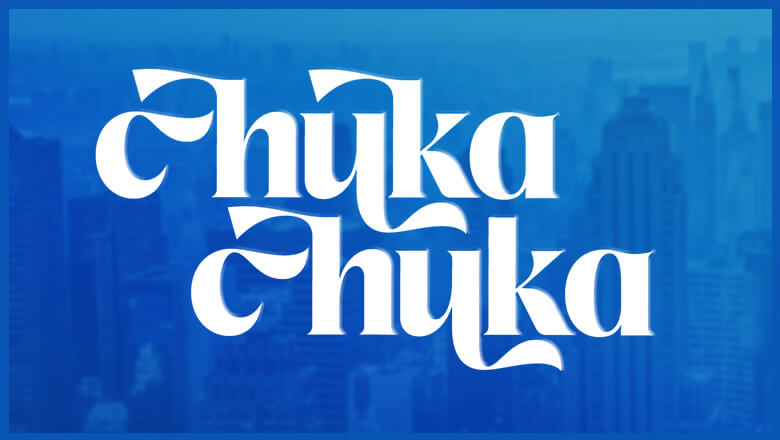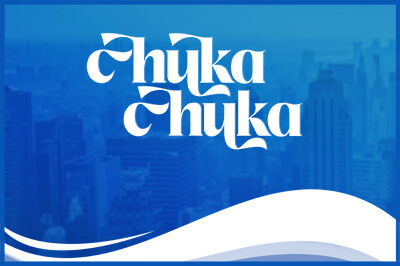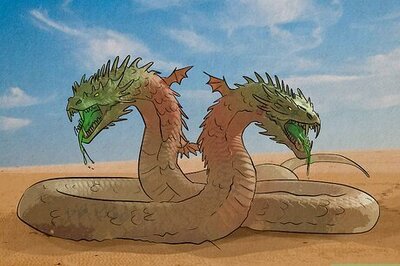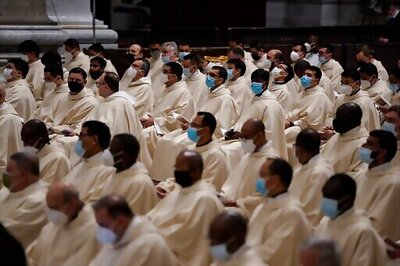
views
The Difference Between High and Low Cheekbones
High cheekbones rest under the eyes; low cheekbones rest near the nostrils. Cheekbones, which are also called zygomatic bones or malar bones, are parts of your skull that add structure and shape to your face. If the bones rest under your eyes, near the bridge of your nose, you have high cheekbones. If the bones rest around the bottom of your nose, near your nostrils, you have low cheekbones. High cheekbone examples: Keira Knightley, Naomi Campbell, Daniel Dae Kim, Cillian Murphy Low cheekbone examples: Zoë Kravitz, Gigi Hadid, Nicole Kidman, Johnny Depp High and low cheekbones function the same, so it isn’t “better” to have one over the other. Both types of cheekbones give shape to your face as well as help you move your jaw, chew your food, and make expressions.
How to Tell If You Have High or Low Cheekbones
Place your thumb next to your ear and your forefinger by your nostril. Set your thumb next to the top of your ear on the side of your face, just above your tragus and under your temple. Then, extend your forefinger and press it under your nostril. It doesn’t matter whether you place your fingers on the right or left side of your face—just do whatever is comfortable for you.
Pinch your fingers together and see where they land on your face. Draw your forefinger and thumb together and press down so you feel the bone under your skin—this is your cheekbone! Then, look in a mirror to see where your cheekbones rest: High cheekbones: If your fingers are closer to your eye or the bridge of your nose. Low cheekbones: If your fingers are closer to the bottom of your nose (nostrils).
What affects cheekbone placement and prominence?
Genetics, facial fat, and aging all affect your cheekbones. Most people’s cheekbones extend from the sides to the bottom of the eye socket. However, lots of factors affect how prominent your cheekbones are and whether they’re high or low: Genetics and ethnic background. For instance, people with East Asian ancestry often have high, prominent cheekbones. Facial fat. Less facial fat can help your cheekbones stand out, while more facial fat can blend them in with the rest of your face. Age. You lose collagen, muscle tone, and bone density as you get older, which can either make your cheekbones look sunken in or even more apparent. Lifestyle. Smoking and other substance use can affect your skin's elasticity and collagen production, which can make your cheekbones look less prominent.
Are high cheekbones considered attractive?
Yes, high cheekbones are considered attractive in many cultures. In lots of places and cultures, like North America (US), Europe (UK), and Africa (Somalia), high cheekbones are seen as signs of conventional attractiveness for men and women. They are thought to help sculpt your face and make it look more lifted, symmetrical, and youthful. Prominent cheekbones, regardless if they’re high or low, are also generally considered a sign of attractiveness in many cultures. This just means that they are defined and protrude from your face, making it look more sculpted and youthful. Just because high cheekbones are commonly seen as a sign of attractiveness doesn’t mean low cheekbones aren’t! In fact, lots of East Asian cultures consider low and non-prominent cheekbones as a marker of beauty. Remember that beauty is in the eye of the beholder—what’s considered attractive and desirable changes over time and is unique to each person.
Using Makeup to Get High Cheekbones
Apply the contour makeup underneath your cheekbones. After you’ve applied foundation and concealer, grab a cream, liquid, or powder contour in a few shades darker than your skin tone. Then, professional makeup artist Alana Schober says to apply the contour starting “at the top of your ear” and draw it down so it “hugs underneath your cheekbone.” Basically, she says you want to apply “the contour in the shape of a banana.” If you’re applying cream or liquid contour, makeup artist Yuka Arora suggests using a damp beauty sponge, like the Beauty Blender, or a “dense…flat top brush” that “can really press the product into the skin,” like a kabuki brush. A brush works best if you’re using powder contour. If you don’t have a contour product, licensed esthetician Melissa Jannes recommends using a foundation that’s about “five times darker than the skin.” She also suggests using a matte product instead of something shimmery to help sculpt the face better. Schober says contouring is a great way to give you the illusion of having higher cheekbones, as contouring “makes your cheekbones pop out a little bit more” and gives “your face a little bit more structure.”
Use bronzer if you prefer a more subtle contour. If you’re striving for a less dramatic look or something you can wear every day, Arora suggests applying bronzer “that’s just a few shades darker than your skin tone.” She says to place the bronzer “on the perimeters of your forehead,” “on your temples,” and “down to the hollows of your cheek.” The points “should pretty much be connected” and create a “helmet shape.” Feel free to use cream, liquid, or powder bronzer and apply it with a beauty sponge or dense kabuki brush—it’s really up to your preference! According to Arora, using bronzer “creates a very slight, slimming effect on the sides of your cheek.” She says “this can really bring out your cheekbones” by “creating that slimming effect right underneath them in the hollows, without having to do the intense contouring.”
Buff the contour or bronzer upwards so it blends with your skin. Schober suggests spending a few minutes blending the contour into your skin so you aren’t left with a solid stripe of makeup under your cheekbone. She says to “buff out [the contour] upward” using a clean sponge or brush. Just keep blending the product from your cheek up to your ear until you no longer see any sharp lines. Schober says the “whole point of contour is to…lift your cheekbone up.” If you blend the contour downwards (ear to cheek), “that's going to… bring the contour down” and create the opposite effect.
Apply highlighter on top of your cheekbone. To help your cheekbones stand out even more, Arora recommends sweeping a matte or shimmery highlighter on top of your cheekbones. Then, blend it “into your skin so it doesn’t look like a stripe.” Arora says she likes to use a damp beauty sponge to “dab on the highlighter” and blend it in, but you can also use a clean brush. Makeup artist Nini Efia Yang agrees that applying highlighter is a great way to make your cheekbones pop, because “whatever you highlight, you're making it bigger” or more noticeable. Optional step: For an even more pronounced cheekbone, Schober suggests applying foundation or concealer in a “shade or two lighter than your foundation right underneath [your] contour line.” Just buff the contour and lighter shade together for a seamless blend.
Put on some blush to add dimension to your cheeks. Sweep a small amount of blush onto your cheeks to help balance your face and give it some color. Schober says where you apply blush just comes down to your preferences and the look you’re going for. For a youthful look, Schober says to apply it on the “apples of your cheek,” which is the “part where if you smile,” you can grab the cheek.” If you want a more snatched look, Schober says to place the blush on top of your cheekbone and “sweep it up into the hairline.” Use a cream, liquid, or powder blush and apply it with your fingers, a beauty sponge, or a brush.
Set your makeup with powder or a setting spray. To help blend out your makeup and keep it from sliding off, Arora recommends spritzing your face with a setting spray. As another option, Schober says she likes to set her contour with powder bronzer and then set her entire face with translucent powder.
Surgical and Non-surgical Procedures to Get High Cheekbones
Dermal fillers Dermal fillers are a non-surgical option that can make your cheekbones appear more prominent. The filler compound is injected underneath your skin to add volume and structure to your cheeks. This is a temporary option that typically lasts for 1 to 2 years. Dermal fillers are commonly made from hyaluronic acid (JUVÉDERM, Restylane), calcium hydroxylapatite (Radiesse), and poly-l-lactic acid (Sculptra). The most common side effects are bleeding, bruising, and swelling. There is also a risk for infection. To help prevent infection, board-certified plastic surgeon Dr. Edward S. Kwak says to “refrain from wearing makeup before or at least 24 hours after the treatment” and “avoid filler treatments if [you] have had a recent upper respiratory illness or sinus infection.” Choose a med spa or clinic with highly trained and knowledgeable aestheticians or doctors. Make sure the providers have extensive experience injecting cheek filler and give their patients natural results.
Fat transfer Fat transfers work similarly to dermal fillers, except the filler is your own fat. During this surgical procedure, your plastic surgeon uses a liposuction tool to remove fat from your hips, stomach, or thighs. They then purify the fat and inject it into your cheeks. The results are typically permanent, though some fat might be lost during your recovery. It typically takes 6 months to see your final results. The most common side effects are bruising, swelling, and soreness. Fat transfers are usually done under local anesthesia, though you can ask for general anesthesia.
Cheek implants Cheek implants are small pieces of medical-grade silicone that permanently add structure and definition to your cheeks. During this surgical procedure, your plastic surgeon makes a small incision inside your mouth or under your eyes. Then, they place the implants over your cheekbones. Before the procedure, your surgeon will work with you to decide what type of implant to use based on your desired results. This surgery is usually done under general anesthesia. Recovery can take several weeks. When choosing a plastic surgeon, Dr. Kwak advises that you “make sure the surgeon is board certified and has an affiliation with a recognized hospital.” At your consultation, “ask your surgeon how often she/he performs your planned procedure” and “ask to see examples of [their] work.”
Buccal fat removal Buccal fat is a pad of fat that rests between your cheek and jaw bone. Permanently removing your buccal fat can help your cheekbones look more prominent and give your face a more structured, defined appearance. During the surgery, your doctor makes an incision inside your mouth and cuts out the buccal fat pads. A good candidate for buccal fat removal is someone who has round, full cheeks. People with narrow, slim faces aren’t usually recommended to get this procedure. Recovery time for this procedure is typically a few weeks. It can take several months to see your final results. The procedure is usually done under local anesthesia, though you can ask for general. To help speed up your recovery time, Dr. Kwak recommends refraining from alcohol a few weeks before and after your surgery. He also says to “refrain from strenuous activities” and suggests eating a “healthy diet” that’s “low in sodium and highly refined carbohydrates.”
Face lift Getting a facelift reduces sagging skin on your face, which helps define your cheekbones and gives you a more youthful appearance. For this surgical procedure, your plastic surgeon makes an incision along your hairline near your temple or ear. They then tighten and sculpt your skin while removing any excess. The surgery is usually performed under general anesthesia. Recovery usually takes several weeks to 1 month. The results typically last for 10 years. Common side effects include swelling, bruising, numbness, and mild to moderate pain. To help minimize bruising, Dr. Kwak says to always “follow the plastic surgeon’s post-operative instructions, specifically regarding activities and diet.” It’s also a good idea to stop taking “medications which can thin the blood,” like “ibuprofen, aspirin,” and “supplements like fish oil and vitamin E.” To help maintain your results, Dr. Kwak advises “living a healthy lifestyle.” He says “known factors such as stress, smoking, sun exposure, and lack of proper sleep have all been shown to accelerate the aging process and have a detrimental impact on the skin.”
Frequently Asked Questions
Are low cheekbones attractive? Yes, lots of cultures and people consider low cheekbones a sign of conventional attractiveness. For instance, in some East Asian cultures (like Japan), softer and less prominent cheekbones in women are seen as more desirable than high cheekbones. Remember that what someone views as attractive is entirely subjective and unique to them. Neither high nor low cheekbones are more beautiful than the other!
Are certain ethnicities known for having high cheekbones? Yes, high cheekbones are more prominent in some ethnicities. For instance, Native Americans, East Asians (South Korea, Japan), Eastern Europeans (Croatia, Russia), and many African countries (Somalia, Ethiopia) are known for having high and defined cheekbones. However, anyone of any background can have high cheekbones—they are not specifically unique to any ethnicity.
What do high cheekbones symbolize? Besides being a marker of conventional attractiveness and youthfulness in some cultures, people tend to view those with high cheekbones as trustworthy. In some places, high cheekbones are seen as a symbol of energy, strength, and bravery.
What face shapes usually have high cheekbones? In general, heart and diamond-shaped faces tend to have high, prominent cheekbones. With both of these face shapes, the widest part of the face is around the cheekbone area. If you have a heart-shaped face, your face is widest around your forehead and cheekbones. The lower half of your face gradually tapers off into a narrow chin. If you have a diamond-shaped face, your face is wider around your cheekbones and narrower around your forehead and jawline.



















Comments
0 comment